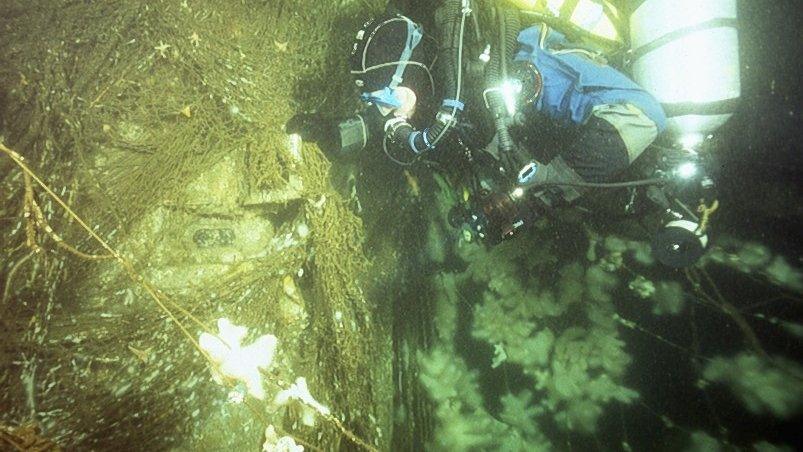Navy officer reveals identity of buried submarine in Dartmouth
- Published
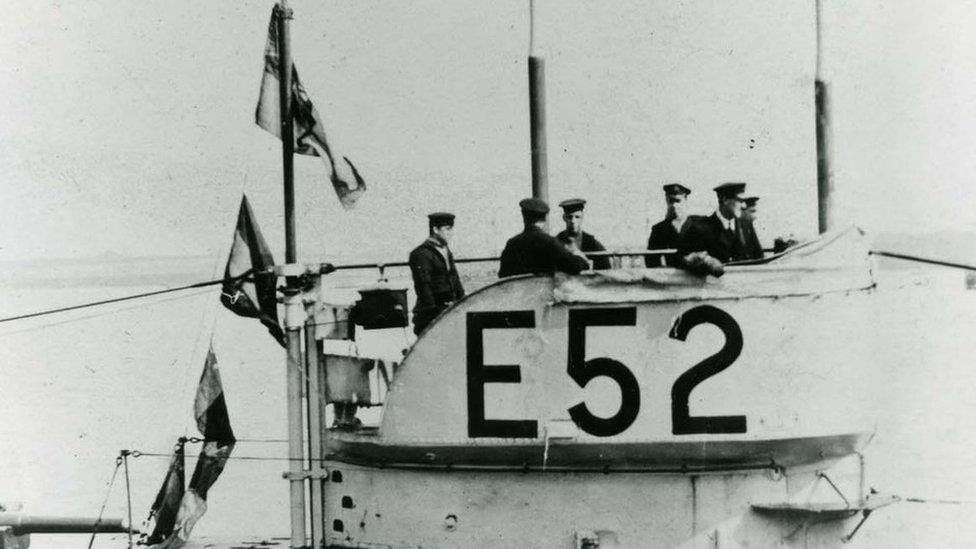
The HMS E52 submarine was used in World War One.
A Royal Navy officer believes he can reveal the identity of a submarine thought to have been buried in a maritime town.
Lt Thomas Kemp said people in Dartmouth, Devon, have been convinced a submarine wreck was buried under Coronation Park since the 1930s.
The naval officer pored over old documents and pictures for months.
He believes the HMS E52 submarine was abandoned on mud flats which were later filled in to create the park.

Lt Kemp has been researching for months
Lt Kemp, a training officer from Britannia Royal Naval College (BRNC), said: "This has been a case of following a very cold trail of breadcrumbs.
"I had been desperately hoping to find a bill of sale or something along those lines with a name on it, but I had to go a little further off-piste to find my answers."
He ploughed through contemporary documents and records to discover the HMS E52 as the most likely submarine to have been scrapped in mud flats at the foot of the hill which is occupied by the naval college.
The HMS E52 submarine fought in World War One, and was decommissioned and sold for scrap in 1921, according to Lt Kemp.

The landscape of Dartmouth has changed considerably over the years
Coombe Mud and neighbouring Sandquay became a breaker's yard for unwanted World War One warships, including at least two submarines.
The site was purchased by the local authority in the late 1920s and filled in to create Coronation Park which opened in 1937 in time for the coronation of George VI.
According to the Royal Navy, external, HMS E52 was one of 58 boats in her class built for the fledgling Silent Service.
Although not fully confirmed, Lt Kemp said his theory about the submarine's identity was "as watertight" as possible.
He said: "We can see from contemporary images from the time that this is where the submarine ought to have lain... we can see what look like the remnants of the hull, where the foreshore and the shoreline would have been."

HMS E52 was one of 58 boats in her class built for the fledgling Silent Service
Dr Harry Bennett, historian and lecturer at the University of Plymouth, said short of digging up the submarine, he thought Lt Kemp had taken the story "as far as it possibly could go".
He said: "It's long been rumoured that there was a submarine sort of buried in the heart of Dartmouth, so it's really interesting to see that he has really nailed it here, as well as anybody probably will do in terms of the identity of the submarine.
"I think this is a real tribute to the work that he's actually done."

Follow BBC News South West on Twitter, external, Facebook, external and Instagram, external. Send your story ideas to spotlight@bbc.co.uk, external
Related topics
- Published14 May 2021
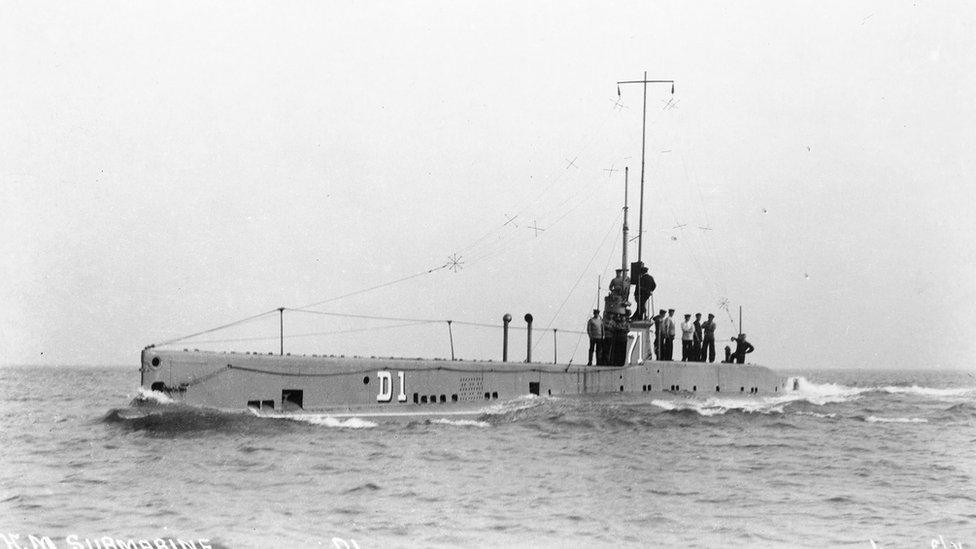
- Published22 December 2017
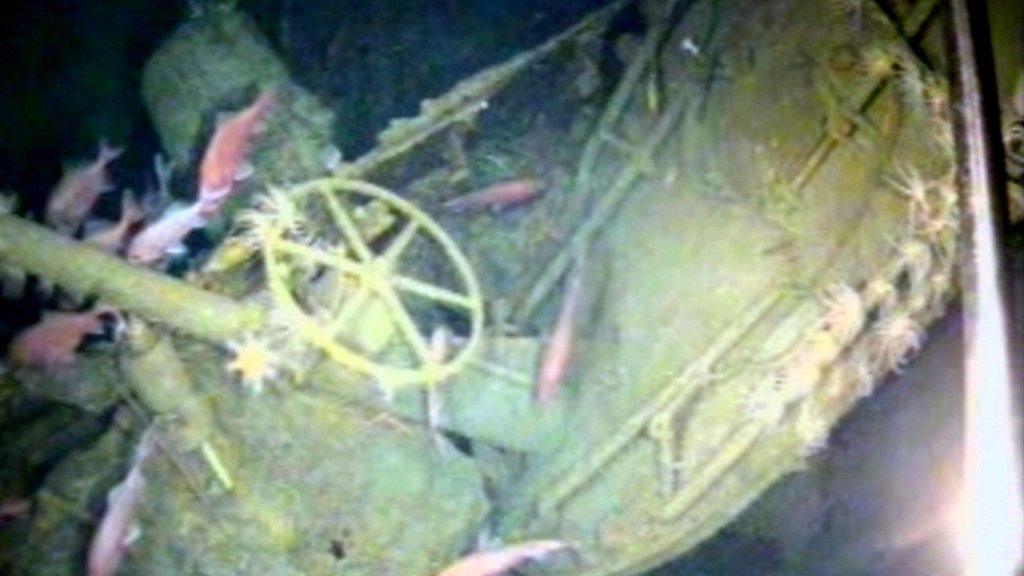
- Published19 September 2017
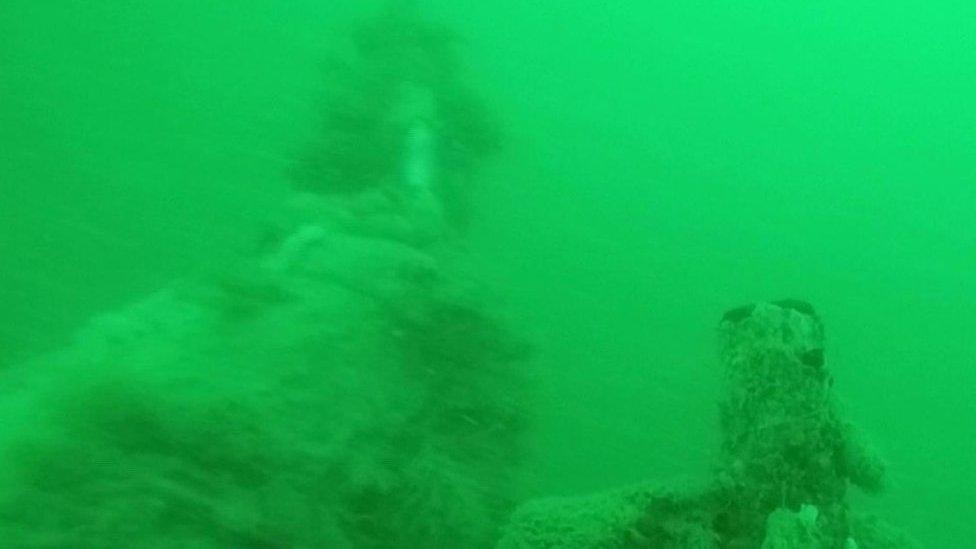
- Published8 August 2014
